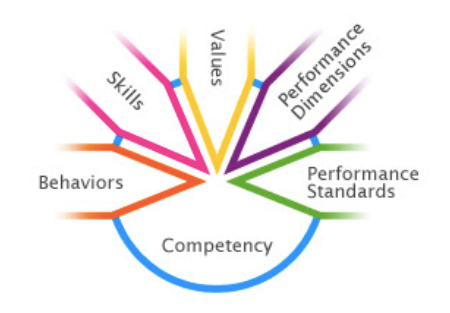The Top Seven Digital Competencies for Organizations
When you move technology from a supporting role in business to a leading player in innovation in business, it requires deep competencies plus more and different skills. I think there will be a change in what organizations will be looking for in new hires, technology professionals, business professionals, and business leaders. This is primarily motivated by organizations having to anticipate and respond to opportunities and threats from traditional and non-traditional sources.
Here are my top seven digital competencies that organizations must possess as we progress in the digital age. There are a number of new base skills & behaviors, values, and performance targets (standards & dimensions) that help build these competencies:

1 — Constituency Engagement
Customer relationships will be a big area of focus through better digital engagement designs, journey mapping, customer input, and realistic feedback loops. This is the start of digital, but better engagement needs to be expanded to include employees, partners, and value chain participants. The skills here are about listening and acting on what's best for all parties, not just the organization, and will require a much better "give and take" balance in relationships.
2 — Hyper Awareness
Organizations are no longer playing in a static world with simple business models. This puts a premium on not only being aware of traditional business contexts and simple business signals, but also on understanding emerging patterns. This requires skills in big data analytic capabilities that leverage algorithms and new/large data sources for emerging patterns of interest.
3 — Complex Problem Solving
In a fast-paced and complex world, the kinds of problems that will surface will be compound in nature and have more dimensions. This means the skills around complexity management will play a bigger role for organizations over time, as measured actions will have to be thought out over time in many arenas of impact. Organizations are ecosystems that play in and around other ecosystems, and potential interactions will need to be considered.
4 — Creative Digital Design
Knowing how to best combine digital capabilities with traditional capabilities, in not only an attractive way but also in a compelling way, is where most organizations are headed. This requires knowing the kind of user experience and man/machine interfaces that will compel an increase in business activity.
5 — Anticipatory Decision Making
Not only will organizations have to be acutely aware of what is happening in their own and neighboring contexts, they will have to be able to predict trends and new areas of impact. This includes predictive analytics, simulation, and cognitive computing capabilities. Driving organizations by looking through rear view mirrors is not the way forward, so there will be a premium on fast and future decisions.
6 — Innovative Productivity
While the traditional productivity levers will still work at times, there will be a demand to increase the new leveraging technologies such as bots and cognitive services (cogs). Resource optimization will go beyond simply creating stretch goals with punitive enforcement approaches. Resources will be considered in all the contexts they participate in at any moment in time and will be given assists that are both temporary and permanent.
7 — Operations Agility
There will be a premium on change management and technologies that respond quickly to change. This means that resources that are flexible will be desired. For people, it means that they might have to have incentives to take on risk. For software and hardware, dynamic configuration features will be a necessity. There will be pressure for rapid development through composition and configuration.
Net; Net
The digital world will be different, requiring additional competencies over and above the base competencies of an organization. This will require new skills that will be prized in the future. These skills will be shaped by the competencies that organizations need to build to survive and thrive in the digital world.
# # #
About our Contributor:
Online Interactive Training Series
In response to a great many requests, Business Rule Solutions now offers at-a-distance learning options. No travel, no backlogs, no hassles. Same great instructors, but with schedules, content and pricing designed to meet the special needs of busy professionals.











How to Define Business Terms in Plain English: A Primer
How to Use DecisionSpeak™ and Question Charts (Q-Charts™)
Decision Tables - A Primer: How to Use TableSpeak™
Tabulation of Lists in RuleSpeak®: A Primer - Using "The Following" Clause
Business Agility Manifesto
Business Rules Manifesto
Business Motivation Model
Decision Vocabulary
[Download]
[Download]
Semantics of Business Vocabulary and Business Rules